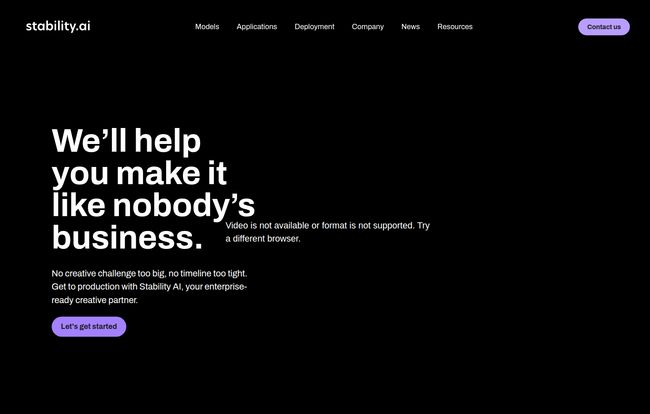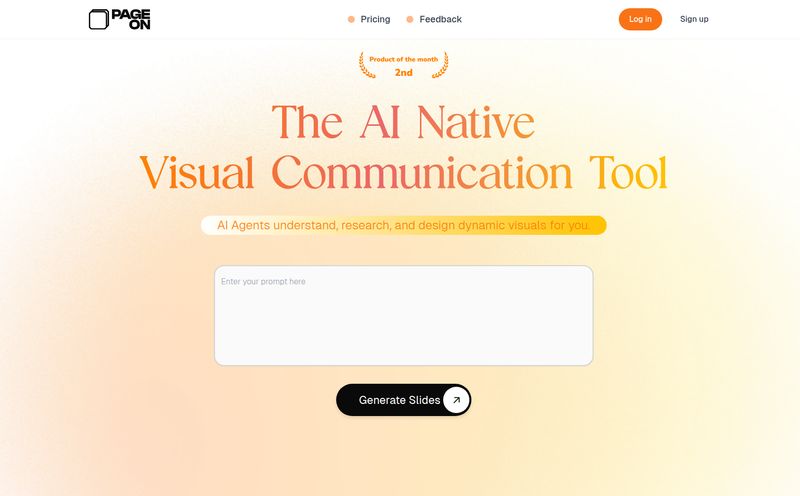For years, I’ve been neck-deep in the world of traffic generation, CPC campaigns, and watching digital trends come and go. We've all seen the promises. “Revolutionary,” they say. “Game-changing,” they whisper. Most of the time, it's just hype. But every now and then, something lands on my desk that makes me lean in a little closer. This time, it’s Stable Video 3D (SV3D) from the folks at Stability AI.
And I have to be honest, this one feels… different. We’ve been talking about accessible 3D for ages, but it’s always been clunky, expensive, or required a PhD in computer graphics. SV3D might just be the tool that finally cracks the code for the rest of us. It promises to take a single, flat image and spin it into a fully-realized 3D object. A pretty bold claim, right?
So, What Exactly is Stable Video 3D?
Let's cut through the jargon. At its heart, Stable Video 3D is an AI model that generates 3D video and models from a single 2D picture. Think about that for a second. You give it a photo of a sneaker, a coffee mug, or a car, and it doesn't just guess what the back looks like—it builds a consistent, multi-view orbital video of it. It’s like it can see around corners.
It's built on top of their previous work, Stable Video Diffusion, but fine-tuned specifically for this kind of 3D task. The result is a massive leap in quality and, most importantly, view-consistency. That’s been the Achilles' heel of so many past attempts. You’d get a 3D model that looked great from the front, but turn it slightly and it would melt into a surrealist nightmare. SV3D seems to keep the object's appearance and structure solid across different angles.

Visit Stable Video 3D (SV3D)
The Tech That Makes It All Tick
You don't need to be a developer to appreciate the cleverness here, but it helps to know what's going on under the hood. It’s not just magic, it’s some seriously smart tech.
From One Image to a 3D World
The core function is called novel view synthesis. The AI analyzes your input image—lighting, texture, shape—and then generates new views from angles that weren't in the original photo. It then stitches these views together to create what looks like a smooth video of the object rotating. From there, you can generate an actual 3D mesh, the kind of file you could use in a game engine, a VR experience, or a product showcase.
The Two Variants: SV3D_u and SV3D_p
Stability AI released two versions of this model. SV3D_u is the base model, designed to create these orbital videos from a single image without any camera path conditioning. SV3D_p is the more advanced version. It can take in an entire orbital path, allowing it to create more controlled and complex 3D videos along specific camera trajectories. More control is always good in my book.
Under the Hood Magic
They’re using some cool techniques to get these results. Things like a masked score distillation sampling loss. I know, it sounds like a mouthful. In simple terms, it's a smarter way for the AI to clean up the 3D model as its being generated, helping it focus on the object itself and produce a cleaner mesh. They also use a disentangled illumination model, which helps the AI separate the object from its lighting. This means you get a more versatile 3D asset, not one that's permanently stuck with the lighting from the source photo. A subtle but huge improvement.
Why I Think This is a Genuine Big Deal
Okay, so the tech is neat. But what does it mean for us—the marketers, the content creators, the small business owners? In my experience, a tool is only as good as the problems it solves.
The E-commerce and Marketing Implications are Huge
This is the big one for me. Imagine you run an online store. Instead of just having five static photos of your product, you could take one good photo and generate a full 360-degree view. Instantly. No expensive photoshoot with a rotating platform, no tedious 3D modeling by hand. This could democratize the kind of high-end product visualization that was once reserved for Amazon and other retail giants.
For marketing assets, the possibilities are just as exciting. Need a cool animated element for a social media ad? Feed SV3D your logo or a product shot and get a dynamic video asset in minutes. The speed and cost-efficiency here could seriously change content production workflows.
Finally, Pose-Controllability That Doesn't Fight You
One of the most frustrating things about earlier generative models was their stubbornness. You’d get what you get. SV3D offers superior pose-controllability. This means more predictable and accurate results. If you want the object to turn exactly 90 degrees to the left, you have a much better chance of actually achieving that. This reliability is what separates a fun toy from a professional tool.
Power to the People (The Open-Source Angle)
Here’s something I really respect. While Stability AI offers a commercial license, they’ve also made the model weights available on Hugging Face for non-commercial use. This is massive for students, researchers, and hobbyists. It allows the community to experiment, learn, and maybe even build the next great thing on top of SV3D. This kind of open access accelerates innovation for everyone.
The Fine Print: Pricing and How to Get It
Naturally, there's no such thing as a free lunch, especially in the world of high-powered AI. The access model for SV3D is pretty straightforward and splits into two paths.
- For Commercial Use: If you want to use the models for business—like on your e-commerce site or in marketing materials—you'll need a Stability AI Membership. The pricing varies based on your needs, so it’s best to check their page for the latest details. This seems fair, its a professional tool for professional use.
- For Non-Commercial Use: If you're just experimenting, doing research, or working on a personal project, you can grab the model from Hugging Face. This is the open-source spirit at its best and a fantastic way to learn without a financial commitment.
The deployment options are also flexible. You can self-host the model if you have the hardware, use their API for integration, or go with a cloud service. This flexibility caters to everyone from solo devs to large enterprises.
My Final Thoughts
Look, the AI space moves at a breakneck pace. There's a new 'next big thing' every week. But Stable Video 3D feels like it has staying power. It addresses a real, tangible need in a way that’s more powerful and accessible than what we had before. It’s not perfect—no tool is—but it's a significant stride forward in making 3D content creation less of a specialized skill and more of a creative choice.
Will it replace 3D artists? No. But will it give them, and the rest of us, an incredible new brush to paint with? Absolutely. I'm genuinely excited to see what people create with this.
Frequently Asked Questions about SV3D
- What is Stable Video 3D (SV3D)?
- SV3D is a generative AI model by Stability AI that creates 3D models and multi-view videos from a single 2D image. It's known for its high-quality output and consistent object appearance from different angles.
- Can I use Stable Video 3D for my business?
- Yes, you can use SV3D for commercial purposes by purchasing a Stability AI Membership. This gives you the license to use the models for things like marketing, product visualization, and more.
- Is there a free version of Stable Video 3D?
- For non-commercial use, such as personal projects, research, or education, the model weights are available on the open-source platform Hugging Face. You can't use this version to make money, though.
- What's the main difference between SV3D and other 3D generation tools?
- SV3D's key advantages are its superior view-consistency and pose-controllability. This means the 3D objects it creates look stable and realistic as they rotate, avoiding the 'melting' or distorted look seen in some earlier models.
- What do I need to run SV3D?
- You have options. You can use Stability AI's API or Cloud Services for easy access, or if you have the technical expertise and powerful enough hardware (specifically a good GPU), you can self-host the model yourself.
- What kind of images work best with SV3D?
- For best results, use a clear, well-lit image of an isolated object against a clean background. The model is designed to work with single objects, so cluttered images might produce less predictable outcomes.



